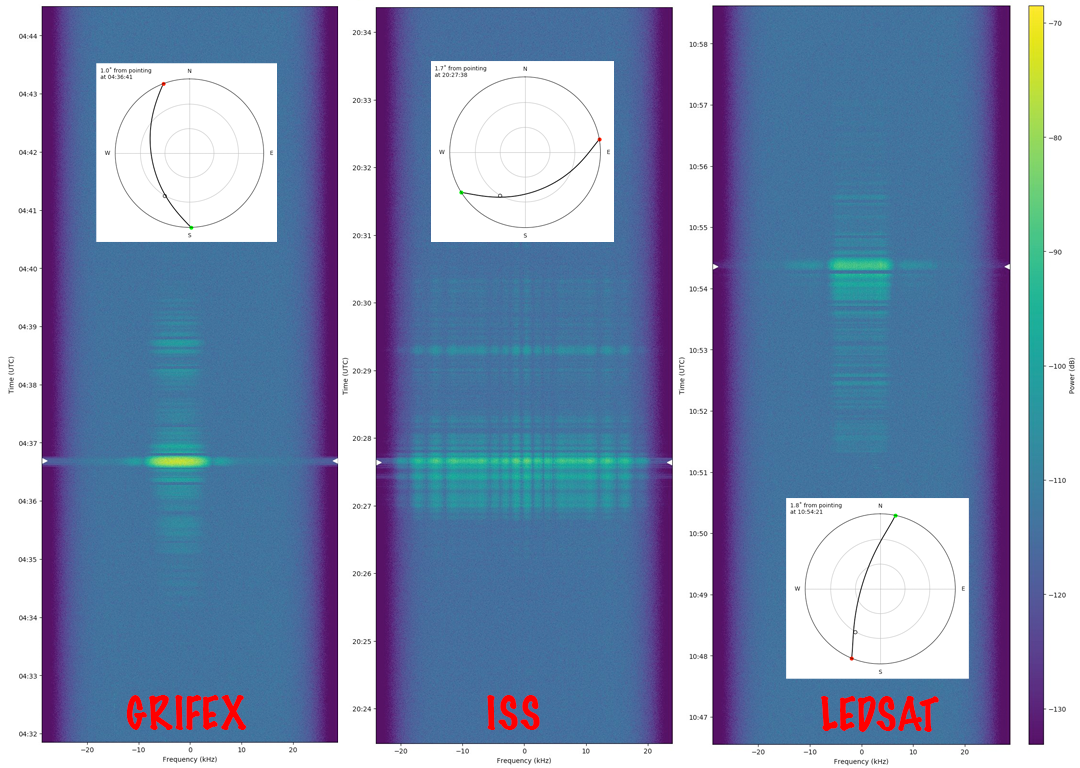Daily Image
19-01-2022Satellite drift scans with the Dwingeloo telescope
| Submitter: | Tammo Jan Dijkema |
| Description: | The Dwingeloo telescope is only allowed to move when two operators are physically present. However, also when it's standing still, it can do experiments. We have recently scheduled some SatNOGS-observations, where the telescope is tuned to observe UHF-satellites that go through the beam of the telescope, which is parked at 30 degrees azimuth (from South), 30 degrees elevation. SatNOGS is a worldwide network of amateur meteor observation stations. The software provided with SatNOGS arranges scheduling, performs Doppler corrections using Gnuradio, and demodulates and uploads data. From these observations, it is clear that the UHF feed is also sensitive well outside the beam of the telescope. However, when satellites cross the beam, the signal is very strong, showing also sidelobes (in frequency) of the signal. The markers in the waterfall plots show the time that the satellite crosses the beam. In the sky plots, the green circle represents the azimuth where the satellite rises, the red circle marks where it sets, while the open circle represents the beam of the parked telescope. The observations shown are archived in SatNOGS as https://network.satnogs.org/observations/5311412/ (GRIFEX) https://network.satnogs.org/observations/5310624/ (ISS) and https://network.satnogs.org/observations/5311409/ (LEDSAT). In the LEDSAT observation, 241 packets were demodulated. |
| Copyright: | CC-BY 4.0 CAMRAS |
| Tweet |  |
